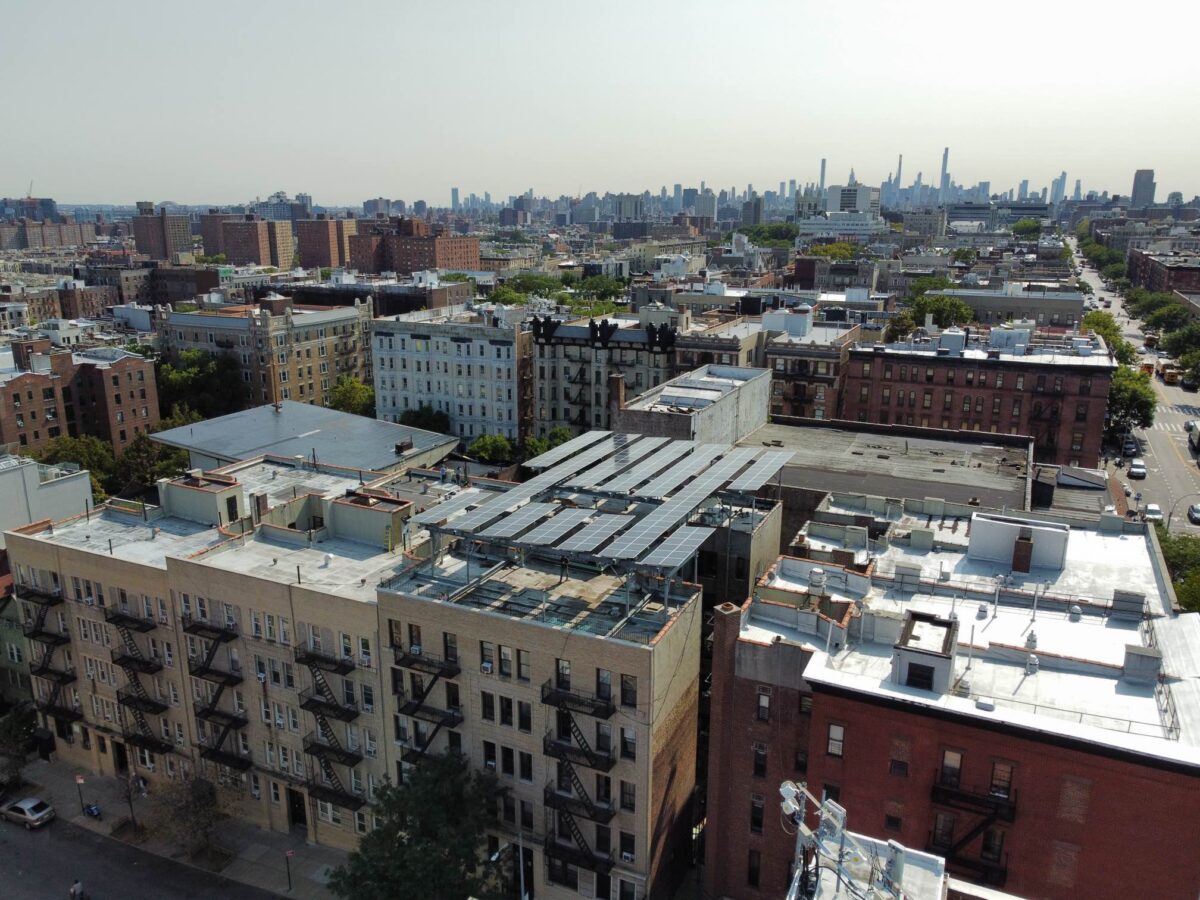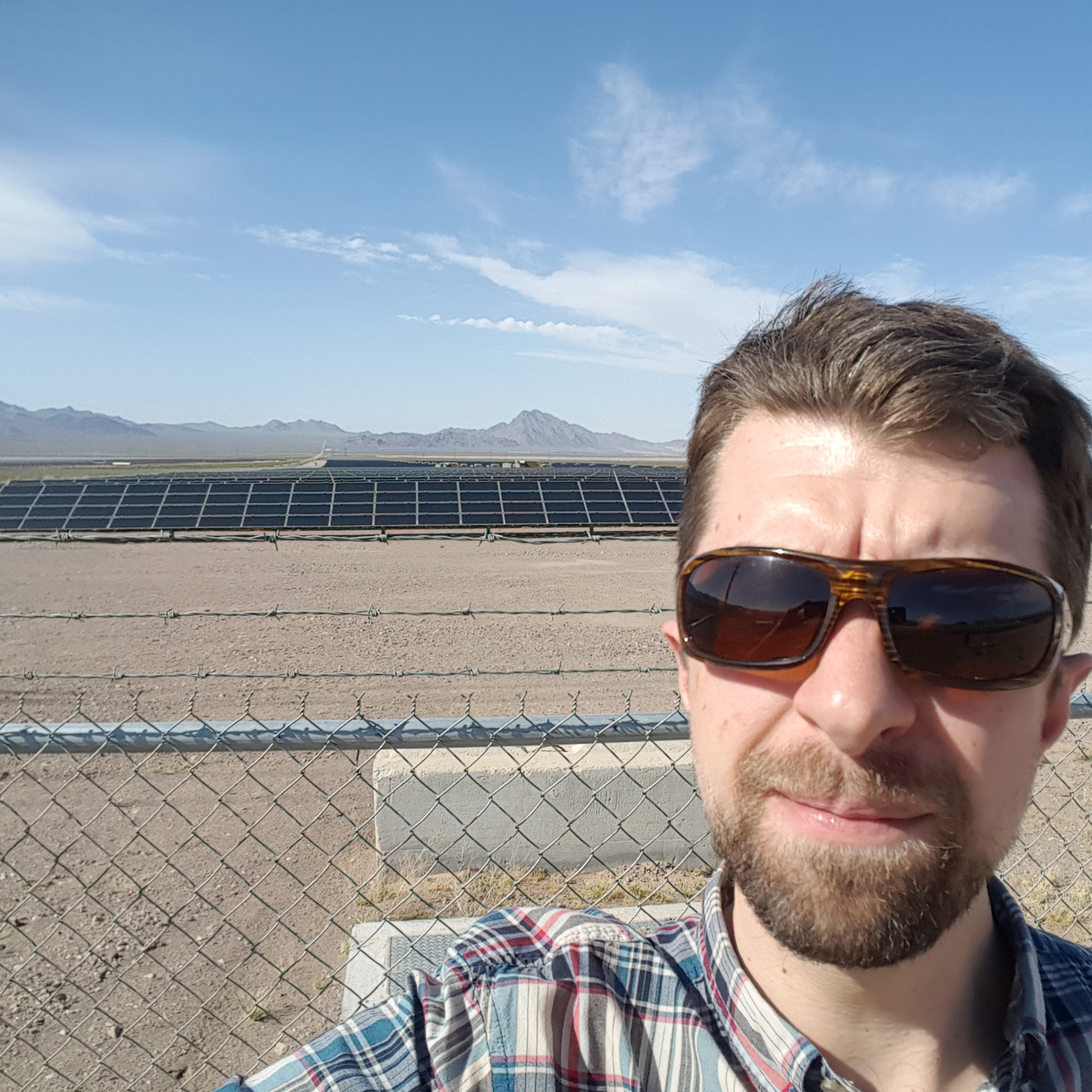Rooftop solar canopies, building electrification and employing new solar installers in the metropolitan New York City region were top topics at the City University New York and New York Solar Energy Industries Association’s (NYSEIA) NYC Solar plus Storage Summit 2023.
Held Tuesday at the Gerald W. Lynch Theater at the John Jay College for Criminal Justice campus in New York, N.Y., the 14th annual conference saw a record 600 plus attendees and 32 exhibiting companies grace the city university campus.
According to the New York State Energy Research and Development Authority (NYSERDA), the city region saw 23% growth in solar installations in Q1 2023, while on an annual basis the city has sustained 41% compounded annual growth rate for citywide installations since 2012, said Luke Forster, senior business analyst at NYSERDA.
New York City is about 45% of the way towards its 2030 goal of having 1 gigawatt of installed solar capacity resources. To date, 450 MW of solar projects have been installed in New York City across 46,164 projects, Forster said.
In 2019, city ordinance Local Law 97 was passed, which facilitated the rapid development of solar canopies on city rooftops. Many conference attendees heralded the city’s LL97 as the gateway to unlocking solar across 75,000 building rooftops, covering more than 40,000 acres.
Under LL97, solar energy is considered a distributed generation resource. Starting in 2024, buildings larger than 25,000 square feet will be penalized per year if they continue to produce carbon emissions from natural gas, fuel oil or other fossil fuel energy sources. Meanwhile for every 100,000 kWh of solar energy generated, the city will deduct 29 million metric tons of building emissions, saving building owners from incurring penalties of $7,700 per year by installing electric systems over fossil fuels.
Julia Casagrande, deputy director of Mayor Eric Adams’ Office of Climate and Environment Justice, said solar canopies are allowed to be installed on building rooftops at up to 15-feet of mounted height, on residential buildings of up to 10,000 square feet.
Community solar
With New York state remaining as the number one U.S. market for community solar development, the city region has also benefited from 45 MW of total community solar projects across rooftop and ground-mounted systems, NYSERDA’s Forster said.
The state’s N.Y. Green Bank has committed to funding $250 million through the Community Decarbonization Fund, which funds community solar development into low-income and disadvantaged communities around the state.
Laura Humphrey, director of sustainability for L+M Development Partners, a New York residential and commercial building owner, said the organization has already seen more than 140 rooftop solar projects under active management with 3 MW of aggregate power capacity.
“Community solar is the primary strategy for our residents. It creates such an immediate benefit and it’s so easy to do,” Humphreys said, adding that L+M Development has seen its tenants procure more than 6 MWh of community solar power.
In December 2021, the real estate developer became the first citywide owner of a net zero building, the Arverne East project, located in the Far Rockaways, Queens. On a 35-acre site, a mixed-use 1,650 unit housing complex deployed closed-loop geothermal energy systems with 12.7 MWh of rooftop solar providing additional energy to low-income residents in the Rockaways neighborhood.
Workforce development
For workforce development, Anthony Fiore, chief program officer of NYSERDA said the state’s energy authority has already invested more than $70 million in citywide training programs to spur more licensed electricians, technicians and solar installers.
Charles Callaway, director of workforce development and founder of workforce development agency, WE ACT for Environmental Justice, told pv magazine USA that his agency started a solar engineering, procurement and construction (EPC) business, Solar Uptown Now Services (SUNS).
With 11 employees that graduated from the WE ACT worker training program, Callaway said the SUNS group is deploying rooftop solar projects across about 14 MW of new solar projects in The Bronx, Manhattan and Brooklyn neighborhoods of New York City.
“We keep developing and want to become a full-fledged solar company and developer in the city. Being a small company, it’s a challenge,” Callaway said. “We hear about this flow of money, but we don’t see it at the community level yet,” he said, referring to the federal Inflation Reduction Act shoring up funding for low- and moderate-income bracket housing groups to install solar systems.
Callaway said the city’s 250,000 plus solar industry has seen just 10% African-American representation, a margin that he hopes to see increased through WE-ACT and promoting workforce development across inner-city neighborhoods in the five city boroughs.
Resiliency
In an afternoon keynote speech, New York City Mayor Eric Adams said after major Canadian wildfires saw smoke lurk over the city from June 5 to 7, 2023, the realness of climate change is a threat that needs to be addressed through clean energy leadership and innovation.
Mayor Adams prioritized energy equity, technology innovation and government investment as the three main pillars to unlocking more solar plus storage deployments across the densely populated city region. Disadvantaged communities suffering from decades of neglect due to residing near fossil fuel operations should have access to abundant community solar resources, he said. Meanwhile the city’s communities should increase the hiring of solar installers from marginalized communities, he added. For technology, the mayor emphasized solar systems paired with distributed storage resources for resiliency measures.
This content is protected by copyright and may not be reused. If you want to cooperate with us and would like to reuse some of our content, please contact: editors@pv-magazine.com.









By submitting this form you agree to pv magazine using your data for the purposes of publishing your comment.
Your personal data will only be disclosed or otherwise transmitted to third parties for the purposes of spam filtering or if this is necessary for technical maintenance of the website. Any other transfer to third parties will not take place unless this is justified on the basis of applicable data protection regulations or if pv magazine is legally obliged to do so.
You may revoke this consent at any time with effect for the future, in which case your personal data will be deleted immediately. Otherwise, your data will be deleted if pv magazine has processed your request or the purpose of data storage is fulfilled.
Further information on data privacy can be found in our Data Protection Policy.